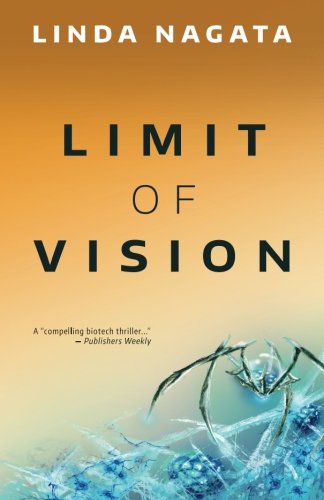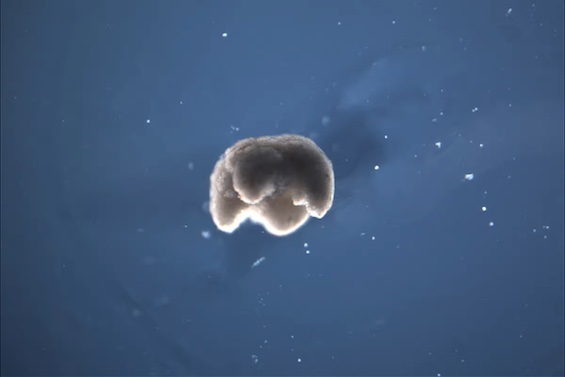
Estimated reading time: 4 minutes
Whiz-bang technology leaps from the page in Limit of Vision by Linda Nagata. It’s a suspenseful novel crammed with action. But its main attraction is the artificial life form whose name appears as the novel’s title. LOVs—tiny, genetically engineered life forms just barely within the human “limit of vision”—drive the action, delivering up surprise after surprise.
Scientific research leads to an existential crisis
LOVs are the product of a private company known as EquaSys (Equatorial Systems). Neuroscientists and genetic engineers working for the company developed them to assist cognitively impaired people with a means to communicate using only their minds. They’re only successful up to a point. They don’t enable speech. But LOVs embedded in people’s foreheads help them focus their thinking and calm their emotions.
Sadly, a tragic accident in one of the company’s labs has led to an international outcry against the creation of artificial life forms of any sort. Authorities have forced any further work on LOVs to be conducted on a satellite in Low-Earth Orbit. And scientists at EquaSys have continued to shape their evolution at a distance. But then they take a step too far, defying the prohibition of research on Earth—and setting off a crisis that will dominate the news for months to come.
Limit of Vision by Linda Nagata (2001) 368 pages ★★★★★

A fascinating cast of characters
The novel’s principal characters enter the scene gradually as the story unfolds and the scene shifts from Hawaii, where EquaSys is based, to the Mekong Delta in Vietnam. Dr. Virgil Copeland, head of the three-person LOV team at EquaSys. Dr. Summer Goforth, who spearheaded the LOVs’ creation. Daniel Simkin, Director of the International Biotechnology Commission established to monitor any signs that an artificial life form might get loose on Earth. Ky Xuan Nguyen, a wealthy Vietnamese advertising executive known for his philanthropic work. Eli Suvanatat, a Thai video journalist now at work in the Mekong Delta on an assignment for an environmental group. And the Roi Nuoc (“water puppets”), a large band of wild children who roam the Mekong Delta. As you might imagine, a cast of characters like this might interact in very interesting ways.
Plus lots of intriguing technology
The clever technology that underpins this story includes the following:
- Farsights, which are eyeglasses with a very big difference. They enhance vision in long-distance, magnification, and night-vision modes and serve the function of today’s smartphones. By tapping on the frame, the wearer may text, place video calls, enjoy news and other online sources, and connect with their personal AI assistant housed on a distant server.
- The personalized Rosa (ROving Silicon Agent) that everyone possesses, an AI-powered executive assistant with an individual name and a distinctive icon.
- Peepers, which are tiny, transparent bubble-like spy drones that permit authorities to conduct surveillance surreptitiously both indoors and out.
- And, of course, the LOVs themselves, the artificial life form that’s the centerpiece of this story. But you’ll have to read the book to know what marvels they can perform.
About the author

Linda Nagata writes science fiction and fantasy novels and short stories. including twenty novels published from 1995 to 2021. She has won both the Nebula and the Locus awards. Nagata was born in San Diego in 1960 but moved as a child with her mother to Hawaii, where she has lived ever since. She received her bachelor’s degree in zoology at the University of Hawaiʻi at Mānoa. Nagata and her husband live on Maui. They have two children.
For related reading
This novel is one of The best techno-thrillers.
For another novel about bioengineering that features lots of inventive technology, see Machinehood by S. B. Divya (Danger looms as AI approaches human-level sentience).
For more good reading, check out:
- These novels won both Hugo and Nebula Awards
- The ultimate guide to the all-time best science fiction novels
- The top science fiction novels
- The top 10 dystopian novels
- 10 new science fiction authors worth reading now
And you can always find my most popular reviews, and the most recent ones, on the Home Page.
























